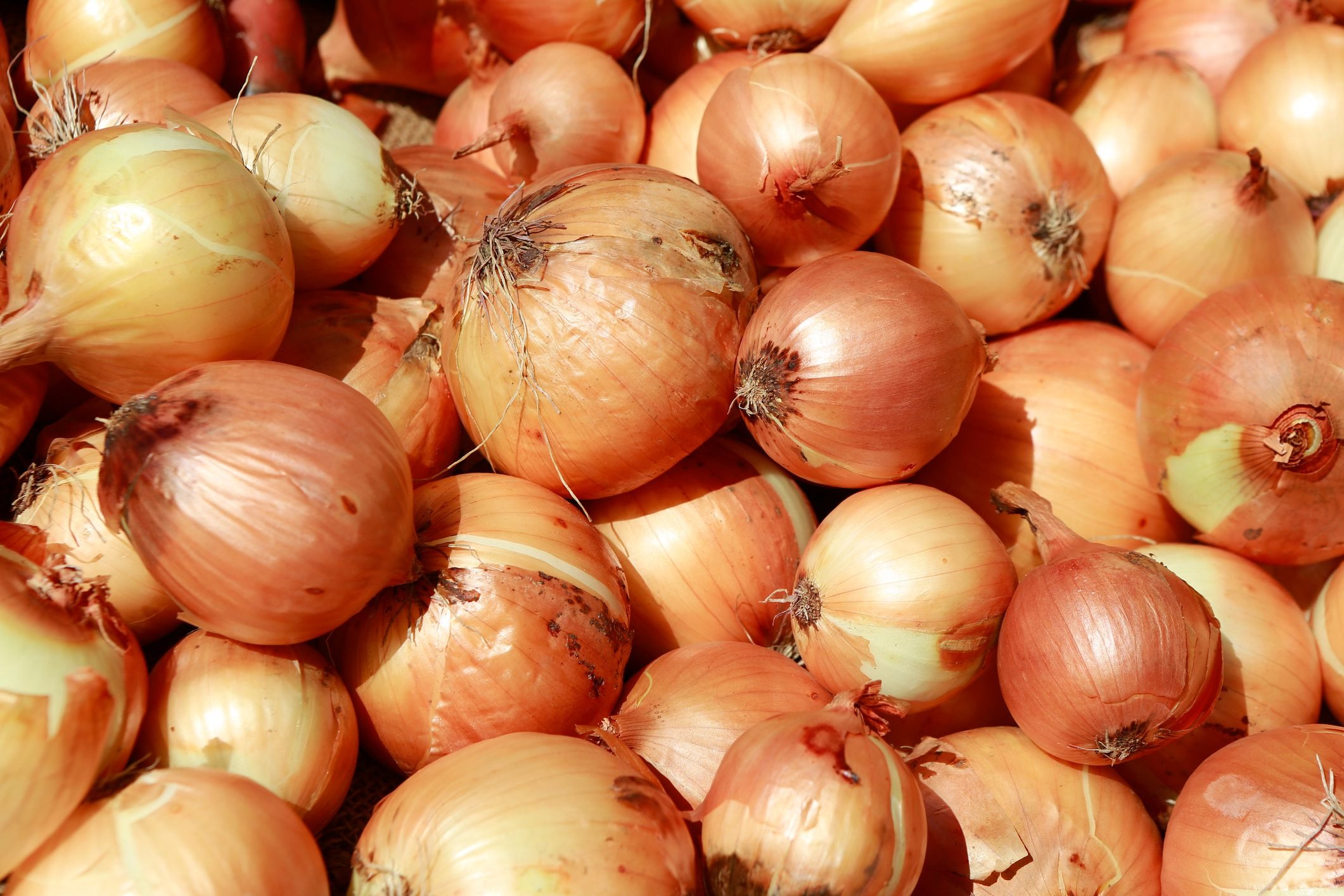To ensure onions last as long as possible, proper storage is essential. Depending on how you’re storing whole onions and shallots, or peeled, cooked, and pickled varieties, they last several days to months.
Being a culinary staple, people tend to buy them in bulk. Unfortunately, they often go soft or start sprouting before you get around to using them.
To avoid waste and save money, people often wonder about the best way to store onions.
According to the National Onion Association (NOA), they are best stored in a cool, dry, dark and well-ventilated room, such as a pantry, cellar, basement or garage (1).
This is because they easily absorb moisture. If temperatures or humidity are too high, they may start to sprout or rot (2).
One study found that storing onions at 40–50°F (4–10°C) is ideal. At these temperatures, they best maintain their characteristics (3).
It’s also important to ensure proper ventilation to prevent molding and rotting. An open basket, bamboo steamer, mesh bag, netted bag or even pantyhose will do.
Avoid leaving onions in plastic bags, as this may make them spoil quickly due to poor ventilation.
Furthermore, darkness helps them last longer. The lack of sunlight reduces changes in temperature and humidity, two factors that can cause them to go bad faster.
That’s why onions are best stored in a cool but dry, dark and well-ventilated place. These conditions ensure that they don’t absorb too much moisture or experience heat or humidity.
Storing whole onions in the fridge exposes them to cold, humid conditions. Since they absorb moisture very easily, they may become mushy and spoil faster.
However, this does not apply to peeled, sliced or diced onions. Peeled onions can be stored in the fridge for up to two weeks, while diced or sliced onions will only last for 7–10 days (4).
Like regular onions, shallots should be stored in a cool, dry, dark and well-ventilated place. This includes rooms such as the pantry, basement, cellar or garage.
Store shallots in a mesh bag, bamboo steamer, open basket or pantyhose to ensure they stay well ventilated. Shallots stored this way should last for up to 30 days.
To freeze shallots, first peel off the skin and separate the cloves. Then place the peeled shallots in a resealable bag or airtight container and store them in the freezer.
Once an onion is peeled, it should be stored in the fridge to avoid bacterial contamination.
Place it in an airtight container and ensure your fridge is set to 40°F (4°C) or below.
According to the USDA, peeled onions can last 10–14 days in the refrigerator (4).

You also want to make sure, as you have gleaned from my anecdote, that they’re separated from potatoes (which are prone to rotting if kept nearby). How long do onions last?
I’ve thought about how to store herbs, berries, tomatoes, nuts, and even flour. (Underwear, that too!) But how to store onions? Don’t you just, er, put them on the counter and let them hang out for…I dont know…ever? That’s what I thought until one dark morning several years ago, when I walked into the kitchen and found the counter covered in stinky liquid. The potatoes and onions, which had been bunking together in the same basket, had led to each other’s demise: The spuds had sprouted and softened; the onions had liquified and leaked.
All products are independently selected by our editors. If you buy something, we may earn an affiliate commission.
I am telling you this horror story not to gross you out, but to implore you to consider how to store onions (and potatoes). Here’s what you need to know to extend your onions’ lifespans for as long as possible:Keep storage onions in a cool, dark, and dry place.
Moisture and light lead to mold (ew) and sprouting (annoying, though not a deal-breaker), so stow your storage onions (red, yellow, and white as well as shallots and the diminutive pearl and cippoline) in a dry, well-ventilated basket, bin, or large bowl. Keep them out of the sun and in a cool but not freezing locale with some air circulation. I keep mine in the cabinet with all of my baking dishes, but in the future I aspire to buy crates’ worth and stow them in a garage or cellar.
One study found that storing onions at 40–50°F (4–10°C) is ideal. At these temperatures, they best maintain their characteristics (3).
To avoid waste and save money, people often wonder about the best way to store onions.
Being a culinary staple, people tend to buy them in bulk. Unfortunately, they often go soft or start sprouting before you get around to using them.
According to the USDA, peeled onions can last 10–14 days in the refrigerator (4).
It’s also important to ensure proper ventilation to prevent molding and rotting. An open basket, bamboo steamer, mesh bag, netted bag or even pantyhose will do.
